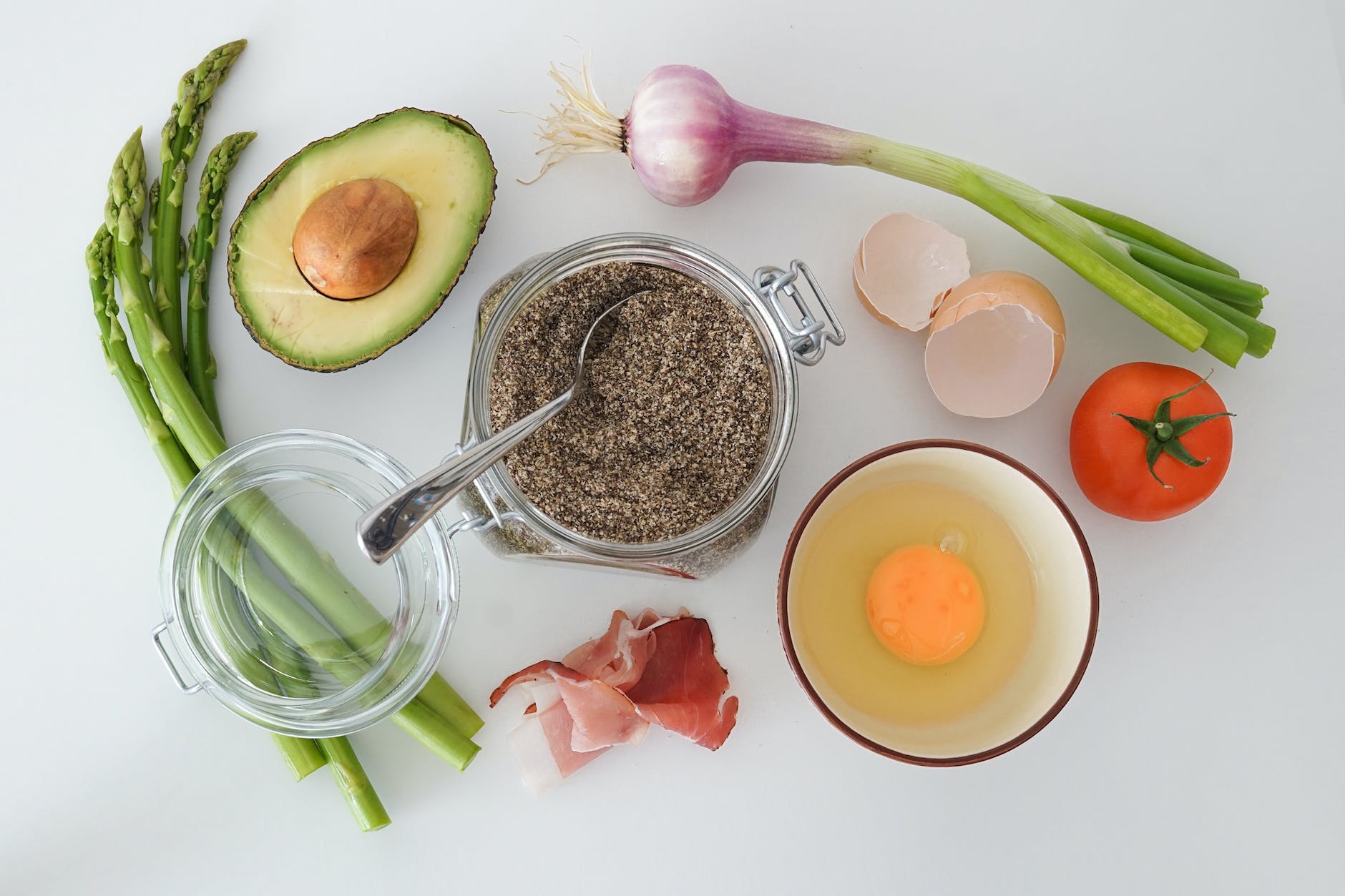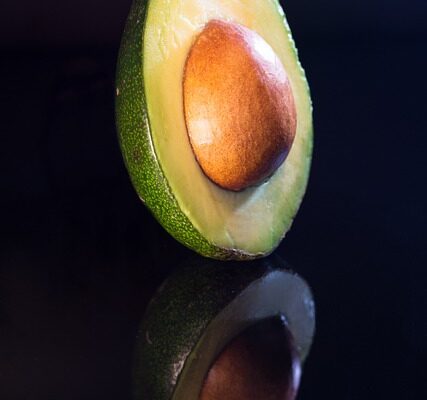Most of us think avocados are only good for their healthy fat content, but they have a plethora of other nutritional and health benefits.
Avocados are one of those complete foods you can enjoy.
Avocados provide almost 20 vitamins, phytonutrients, and minerals and have plenty of fiber, which many people don’t realize.
It goes without saying that avocados have become extremely popular. Statistics reveal that the average person consumes 8 pounds of avocado per year, according to the United States Department of Agriculture (USDA). That’s more than triple the amount of avocados consumed just two decades ago.
Because fruits and vegetables do not come with labels, few avoid-obsessed people are aware of the comprehensive avocado nutrition information, let alone the numerous health benefits of avocados.
What Exactly Is Avocado?
First and foremost: Avocado is, in fact, a fruit. It may be eaten as a vegetable and is not sweet as most fruits, but it is still a fruit. According to Purdue University’s College of Agriculture, avocados are assumed to have originated in southern Mexico and were farmed there, as well as in Central and South America, before European colonialists transported the fruit elsewhere throughout the world.
They thrive in humid, tropical, or near-tropical environments. Oh, and there isn’t just one sort of avocado – there are dozens of varieties growing all over the world.

Avocado Nutritional Values
First and foremost: One serving is not an avocado (or even half an avocado). One serving of an avocado is one-third of a medium-sized avocado, which has about 80 calories.
What about avocado nutrition? Avocados are a nutrient-dense food, which means you get a lot of health bang for your buck. The majority of the fat is monounsaturated. Most importantly, it is sodium-free.
There you have it: the f-word, fat. Thankfully, the days of considering all fats to be dietary demons are long gone. Today, it’s all about consuming the correct fats, such as unsaturated fats, one of which (monounsaturated) avocados include.
Other nutrients found in the fruit include: A single serving of the fruit contains over 20 vitamins and minerals, including 40 micrograms of folate and 240 milligrams of potassium (which, by the way, is more than a banana). Potassium, whether from an avocado or a banana, is one of the best minerals for improving workout performance and managing blood pressure.
According to the USDA, here is the nutritional information for one serving of avocado (about 1/3 of a medium fruit):
- 80 kilocalories
- 7 g of fat
- a gram of protein
- 4 g carbohydrates
- 1 gram sugar
- 3 gram fiber
Avocado’s Health Benefits
The numbers are nice, and the avocado’s nutritional values are excellent, but they are only one part of the whole. To truly appreciate avocados have received so much attention, consider the health benefits.
Lowers Cholesterol and Protects the Heart
Avocados’ monounsaturated fats — or omega-9s, the same as those found in olive oil — have the ability to lower your LDL (“bad”) cholesterol and, as a result, lessen your risk of heart disease and stroke. Adding one avocado per day to a moderate-fat diet was connected to lower total cholesterol and LDL cholesterol. Some Studies revealed overweight or obese adults who eat a half or full avocado with their meal exhibited fewer indications of inflammation and improved markers of heart health compared to those who ate a high-carb, low-fat meal with the same calories.
Aids in Digestion
Avocados, like many other fruits, are high in fiber. According to a study, around 30% of the fiber in avocados is soluble, whereas 70% is insoluble. What is the significance of this? Both types of fiber are beneficial to your digestive health. Soluble fiber dissolves in water. It creates a gel-like substance when it comes into touch with fluids. As a result, it occupies more room in your stomach and keeps you fuller for longer. Insoluble fiber is not water-soluble; instead, it acts to bulk up and soften feces, making it easier to pass.
Stabilizes Blood sugar levels
Another of avocados’ many health benefits is that soluble fiber can help balance blood sugar. According to a study, participants reported improved pleasure and a decreased urge to eat more after eating half an avocado at lunch, while blood sugar testing revealed no increases.
Bone Strengthening
Among the 20 vitamins and minerals found in each serving of the all-star fruit? Calcium, as well as vitamins C, D, and K, are essential for bone health. It’s as simple as that. (In case you didn’t know, lifting weights also strengthens bones.)
Helps with Nutrient Absorption
Consume a nutrient-dense diet? Congratulations, but don’t stop there. It is just as crucial to consume nutrients as it is to be able to digest them (and hence get their advantages). Enter the avocado. Adding avocado oil or avocado to salad or salsa can significantly boost nutritional absorption.
Avocado’s Potential Risks
Avocado fans may be tempted to consume an excessive amount of green fruit, but this may result in certain negative consequences. Even with an all-star panel of avocado nutrition facts, there might be too much of a good thing. For one thing, eating too much fiber can lead to stomach problems and constipation.
Furthermore, there are advantages to varying the items on your plate if you eat a specific food that crowds out other foods.

Healthier Fat Replacement
As a healthier fat replacement, want more healthy fats but don’t want to eat an entire avocado? You may sneak it into your favorite cuisine by using avocado instead of mayonnaise in egg salad or chicken salad, for example. Avocado can also replace butter in baked dishes.
As an addition to smoothies, add some fresh or frozen avocado to your favorite smoothie to take it to the next level. The rich avocado will ensure that your smoothie is thick and creamy.
Ice Cream?
As a basis for ice cream, avocado ice cream exists, and it’s amazing. You’ll get a creamy, silky texture, and you don’t need a sophisticated ice cream maker to produce it.
As a basic dinner component. Grill and fill avocado halves with corn and bean salsa for a quick supper packed with nutrients.
Portion it!
The most important factor to focus on is portion size. It depends on your nutritional goals. Eating healthy, in general, can differ significantly from eating healthy for a specific objective, such as weight loss or increase.
Knowing your objective might help you determine the right portion size and cadence for you. One serving (again, one-third of a medium-sized fruit) a few times per week is a good starting point.
Allergy
Avocado allergies are also conceivable, albeit they are uncommon. Those who have allergic reactions to birch pollen may also be sensitive to avocado in the form of an oral allergy syndrome.
Swelling or irritation of the lips or throat are symptoms. Avocados can also cause an allergic reaction if you are allergic to latex. Hives, lip swelling, sneezing, and, in rare circumstances, anaphylaxis are symptoms of this allergic reaction.
Avocado Preparation and Consumption
Now that you have fully informed about the health benefits of avocados, it’s time to cut and serve the superfruit. Avocados can be found in the produce area of your grocery store or health food shop.
Do you know how to select a ripe avocado? According to the University of California, the trick is to hold the fruit in your palm and gently compress it with your fingers; if the flesh has a touch of give, it’s ready to eat. Also, avoid mashing it with your thumb since this might cause bruising (of the avocado).
To Conclude on Benefits of Avocado
After you’ve chosen a perfectly ripe avocado, follow these steps to properly prepare and store it:
Rinse it thoroughly. Even if you don’t eat the avocado’s skin, remember to wash it before cutting it. Just like any fruit that you slice, any dirt, germs, or bacteria on the outside can be brought inside by the knife you’re using. To further persuade you, an FDA analysis found that nearly 18% of avocado skin samples tested positive for listeria, so you really shouldn’t miss this step.
Slice with care. By preparing like an expert, you can avoid “avocado hand,” a potentially serious injury caused by carelessly cutting an avocado. Slice the fruit all the way around and twist it to separate the halves. Landing the blade carefully but strongly in the heart of the pit and twisting the fruit to extract.
Mix in some citrus. Squeeze on some lemon or lime juice to keep the fresh green color for a little longer after cutting. Acidic liquids like these aid in the slowing of browning. Then, wrap it in clear plastic wrap, making sure to get a good tight seal. Because oxygen accelerates the browning process, place your wrapped avocado in an airtight container for added protection.
Leftover Avocados
It should be vacuum-sealed. Vacuum-sealing leftover halves of avocados will keep them green much longer than pretty much any other method because oxygen exposure causes browning.
